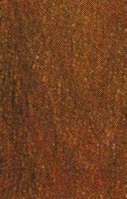
Balong ayam (Pentace triptera)
Family: Tiliaceae
Common names: Balong ayam, Janda baik, Kebal ayam, Melunak, Melunak pusat beludu, Pinang baik
Distributed in: Malaysia (Oceania and S.E. Asia)
Common uses: Agricultural implements, Boat building (general), Cabinetmaking, Flooring, Flooring: commercial heavy traffic, Furniture, Joinery, Light construction, Mine timbers, Paneling, Particleboard, Plywood, Pulp/Paper products, Roofing, Sporting Goods, Toys, Turnery, Vehicle parts
Tree size: Tree height is 20-30 m
Colors: the heart isReddish brown, Yellow to golden-yellow to orangeand the sapwoodWhite to yellow, Yellow.The grain isStriped figure, the textureMedium coarse to coarseand the lusterMedium
Natural durability: Resistant to wood staining fungal attack, Susceptible to attack from powder post (Lyctid & Bostrychid) beetles
Kiln Schedules: Dry at a slow speed
Drying Defects: Slight surface checking, Slight twist/warp
Tree Identification: Bole/stem form is buttressed
Boring: Easy
Cutting Resistance: Cutting Resistance with green wood is easy
Gluing: Easy to glue
Mortising: Easy to mortise
Moulding: Easy to mould
Movement in Service: Easy to mould
Nailing: Easy to nail, Possible if prebored
Planing: Planes well, to a good finish
Resistance to Impregnation: Resistant sapwood
Resistance to Splitting: Poor
Response to hand tools: Moderate working qualities
Veneering qualities: Easy to cut
Screwing: Easy to screw
; Turning: Good results
Polishing: Satisfactory;
- Numerical data Metric
- Numerical data English
- Strength properties
- References
 |
 |
 |
 |
| Item |
Green |
Dry |
Metric |
| Specific Gravity |
|
|
|
| Density |
|
641 |
kg/m3 |
| Bending Strength |
|
|
kg/cm2 |
| Crushing Strength |
|
|
kg/cm2 |
| Hardness |
|
|
kg |
| Impact Strength |
|
|
cm |
| Shearing Strength |
|
|
kg/cm2 |
| Stiffness |
|
|
1000 kg/cm2 |
| Tangential Shrinkage |
|
|
% |
| Radial Shrinkage |
2 |
|
% |
| Weight |
624 |
496 |
kg/m3 |
| Maximum Load |
|
|
cm-kg/cm3 |
| Toughness |
|
|
cm-kg |
| Static Bending |
|
|
kg/cm2 |
|
 |  |  |  | | Item | Green | Dry | English | | Density | | 40 | lbs/ft3 | | Weight | 39 | 31 | lbs/ft3 | | Radial Shrinkage | 2 | | % | | Tangential Shrinkage | 5 | | % | |
Density (dry weight) = 38-45 lbs/cu. ft.
Shrinkage, Tangential = very small
Shrinkage, Radial = very small
Shrinkage, Tangential = small
Brown, W.H.,1978,Timbers of the World, No. 4 South East Asia,TRADA, Red Booklet SeriesChudnoff, M.,1984,Tropical Timbers of the World,U.S.A. Department of Agriculture, Forest Service, Forest Products,Laboratory, Madison.Desch, H.E.,1954,Manual of Malayan Timbers (2 vols,Malayan Forest Records,no.15Keating, W.G., Bolza, E.,1982,Characteristics properties and uses of timbers. South East Asia, Northern,Australia and the Pacific,C.S.I.R.O. Div. Chemical Technology,Inkata Press,1Lee, Y.H., et al,1974,Commercial Timbers of Peninsular Malaysia,Kuala Lumpur Malaysia Department of Forestry Peninsular Malaysia and,Malaysian Timber Industry BoardLee, Y.H., Lopez, D.T.,1968,The Machining Properties of some Malayan Timbers,Malayan Forester,3,pp194-210Menon, P.K.B.,1959,The wood anatomy of Malayan timbers: commercial timbers, 3. Light,hardwoods,Malaysian Forest Research Institute Kepong, Research Pamplet, No. 27.Whitmore, T.C.,1973,Tree Flora of Malaya A Manual for Foresters Volume 2,Forest Department Ministry of Primary Industries MalaysiaWyatt-Smith, J.,1979,Pocket Checklist of Timber Trees,Malayan Forest Records No.17
|








